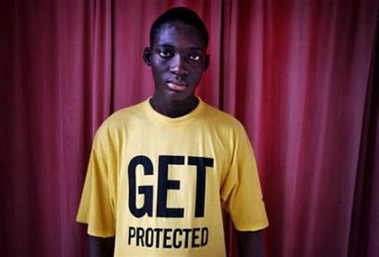HIV prevention could save millions in Africa: study
Updated: 2007-09-19 10:06
WASHINGTON - Using drugs to prevent HIV infection could prevent as many as 3 million new cases in Africa if it was done right, researchers predicted on Tuesday.
 Pierre Andre Mansour Dalmeida, 17, poses for a portrait in his home in Senegal's capital Dakar, June 22, 2007. Using drugs to prevent HIV infection could prevent as many as 3 million new cases in Africa if it was done right, researchers predicted on Tuesday. [Reuters] |
A daily pill would not even have to prevent infection all the time to have this effect, if it was given to the right people with the proper counseling, the team at the University of Pittsburgh School of Medicine and at Imperial College London said.
"If you do it right, you can prevent lots of infections," Pittsburgh's Dr. John Mellors, who helped direct the study, said in a telephone interview.
The researchers wanted to know if a potential new approach called pre-exposure chemoprophylaxis, or PrEP, would work in a real-world setting.
Studies in monkeys suggest that an HIV drug called tenofovir, made by California-based Gilead Sciences Inc. under the brand name Viread, can keep a healthy animal or person from becoming infected with the incurable virus.
"We looked at a huge range of variables - the efficacy of PrEP, how quickly the population gets on it, whether they stay on it, what population you target," Mellors said.
"One of the most important things we found is if you target the two highest risk groups, about 18 percent of the population, you have the most cost-effective approach."
For the most part, this means young men who have many different sexual partners.
The AIDS virus infects close to 40 million people globally and it has killed 25 million. Sub-Saharan Africa has about 63 percent of all cases.
Condoms can prevent infection, but people do not use them reliably.
Once a day
But taking a daily pill - or perhaps using a drug vaginally or rectally - can also prevent infection.
"Our analyses indicate that approximately 2.7 to 3.2 million new HIV-1 infections could be averted in southern sub-Saharan Africa over the next 10 years by targeting PrEP to population groups with the highest sexual activity concomitant with preventing increased risk behaviors in those on PrEP," the researchers wrote in their report, published in the online Public Library of Science journal PLoS ONE.
Such a program would require intensive counseling to find out who the most sexually active people were and to ensure that the medication did not give people a sense of invulnerability, Mellors said.
"If the public feels that they can take a pill and now have more sex, the effect of the PrEP will go way down," he said.
Their model simulated a real-world African country where 20 percent of the adult population was infected.
In the best-case scenario, PrEP was effective 90 percent of the time and used by 75 percent of the sexually active population. The computer model predicted a 74 percent reduction in new infections.
The group predicted this would cost $2 billion over 10 years for southern Africa.
If PrEP worked just 30 percent of the time and was used by 25 percent of the sexually active population, it would only prevent 3.3 percent of new infections.
Groups are testing tenofovir as a preventive agent in people, both as a daily pill and as a topical cream that people could use vaginally and rectally.
|
|
|
||
|
||
|
|
|
|